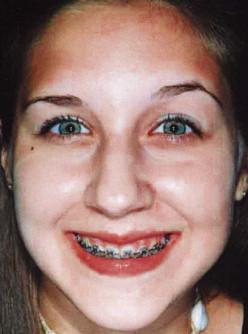Physical Address
304 North Cardinal St.
Dorchester Center, MA 02124
Evaluation of the aging face must take into account changes that occur in all levels of tissue.
Young faces are characterized by arcs and fullness, not merely by the absence of wrinkles.
The morphologic changes that occur in the aging face are due mostly to the redistribution of fat and changes in muscle tone (both increased and decreased) but bony remodeling also plays a role.
Gravitational aging is in all likelihood a myth – it is elucidative, not causative.
Structural fat augmentation and other methods of soft tissue augmentation can reapproximate the contours of the youthful face; chemodenervation is a useful adjunctive treatment in achieving this goal.
Evaluation of the senescent face requires that one look deeper than the rhytides and dyschromia of photoaged skin, into the structural alterations that occur below the skin surface. Throughout life, the face, like the body, changes shape. Certainly some of these changes are due to bony growth and remodeling and changes in muscle mass and tone, but fat seems to be the most substantial contributor to soft tissue changes. When examining a face for rejuvenation procedures, the physician must think of the face in “layers” and approach the aging changes in each layer separately. Aging occurs both as an extrinsic and intrinsic phenomenon. External aging occurs through ultraviolet light (UVL) and oxidative damage and most characteristically takes the form of dyschromia, telangiectasias, and textural changes. Internal aging is likely hormonally and genetically regulated and is responsible for bone and soft tissue remodeling, including dermal changes. In essence, “wrinkles” occur secondary to intrinsic and extrinsic aging.
Cumulative UVL exposure decreases skin collagen content, aggregates elastic fibers, disrupts cutaneous immune surveillance, stimulates melanogenesis and angiogenesis, and disorganizes epidermal cell maturation. Clinically, this translates into coarsened pores, sebaceous hyperplasia, telangiectasias, keratosis, and skin cancers. A clinical correlation can be made between ultrastructural changes in the collagen and elastin and textural changes such as a crepe paper-like appearance and fine rhytides. Coarse rhytides or folds are more reasonably explained by soft tissue and bony atrophy, muscular movement, or a combination of all three.
Sarcopenia, or skeletal muscle wastage with age, is a selective event affecting some but not all muscles of the body. For instance, the quadriceps muscles lose up to 21% of their mass with advancing age, but the muscles of the arm remain unchanged. This loss is also somewhat attenuated by exercise. While it is a widely recognized theory to explain aging, to date there is no evidence to substantiate that the facial mimetic muscles atrophy with age. In fact, evidence exists to the contrary. For example, magnetic resonance imaging (MRI) studies reveal that there is no significant change in length or projection of the levator labii superioris or the zygomaticus muscles between young and old subjects.
In youth, the mimetic muscles are separated from the overlying cutis by a diffuse layer of subcutaneous fat. This serves to attenuate the muscular “pull” on the skin and acts as a glide plane between the skin and muscle. Animation of a young face is followed by a relaxation of the muscular impression on the skin. In an old face, the undersurface of the dermis lies in close juxtaposition to the mimetic musculature and investing superficial musculoaponeurotic system (SMAS). Trabeculae of the reticular dermis attach to the underlying muscles. The skin is tugged along with each facial expression. Repeated facial animation over time in conjunction with chronic sun exposure serve to permanently fibrose the skin to the muscle and set in the dermal component of the rhytides. A helpful analogy is to think of the face as a Roman shade or blind. When young, the Roman shade is made of foam, so any tugging on the cord only minimally raises and wrinkles the shade ( Fig. 23.1 ). With age, the shade becomes like tissue paper so even a minor pull on the cord produces a number of creases. Botulinum toxin halts the tugging on the cord, but only volume replacement can replenish the thickness of the shade.

Become a Clinical Tree membership for Full access and enjoy Unlimited articles
If you are a member. Log in here